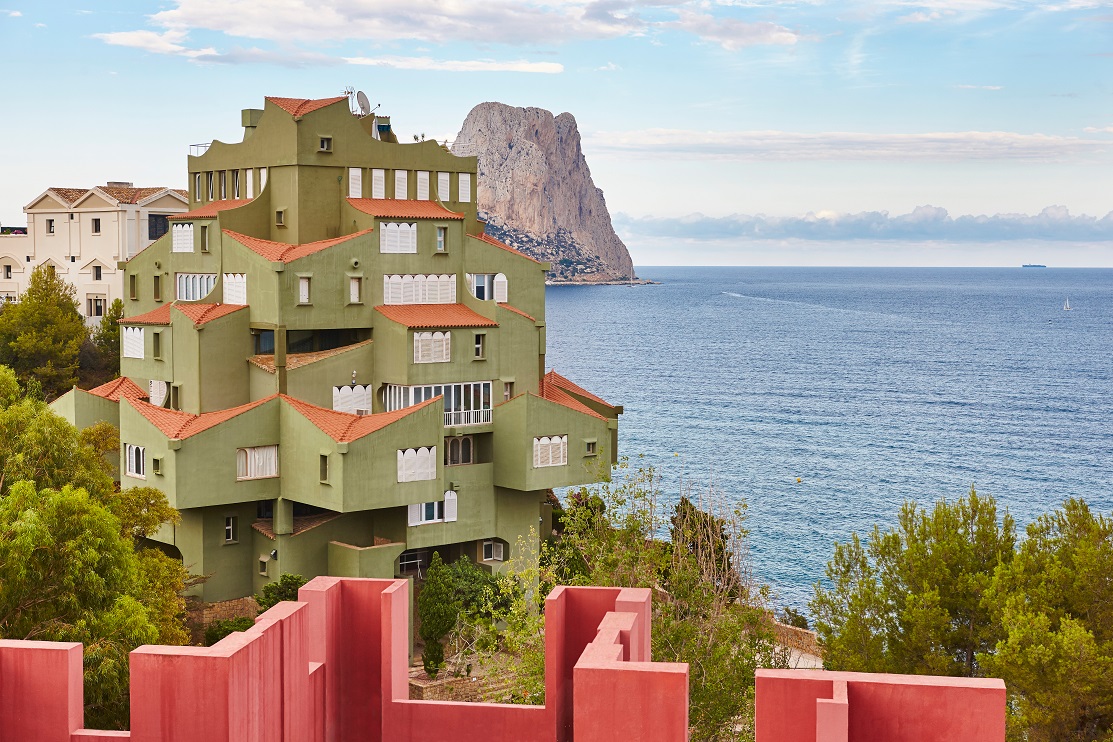Over a 60-year career, he created ‘among the most impressive buildings of the 20th century’, according to architectural historian Andrew Ayers, including the Walden 7 apartment building near Barcelona (1975) and a series of giant housing schemes.
Architecture critic Catherine Slessor described him as the ‘undisputed imperator of the monumental’ whose ‘housing complexes became synonymous with dystopia, both real and cinematic’.
His practice’s 1982 Postmodern Les Espaces d'Abraxas megastructure in Noisy-Le-Grand, eastern Paris, featured in both the 1985 film Brazil and the 2015 film The Hunger Games: Mockingjay - Part 2.
Advertisement

Source:Shutterstock
The 591-home Les Espaces d'Abraxas housing complex near Paris
The architect and urban planner, who died last week from Covid-related complications, was born Ricardo Bofill Leví in Barcelona in 1939 ‘to a family of the Catalan cultural bourgeoisie, supportive of his earliest endeavours in architecture’. His father Emili was a local property developer and builder.
After graduating from the École des Beaux-Arts of Geneva, Switzerland -– he had been expelled from the Universitat de Barcelona after being arrested in a student demonstration – he set up his multidisiplinary practice Ricardo Bofill Taller de Arquitectura (RBTA) in 1963.
His early work aimed to ‘rediscover the vernacular Catalan style and the minimalist architecture of North Africa’ and was inspired by villages on the edge of the Sahara Desert.
The team experimented with large scale three-dimensional modular geometries, including the vertical ‘garden city in space’ Xanadu (1971) and the neighbouring red and pink casbah-inspired La Muralla Roja (1968-1973) in Calpe, Spain.
Due to the tense political situation in Spain in the 1970s, Bofill began looking for work overseas and set up a second studio in Paris.
Advertisement
Joined by architect Jean Pierre Carniaux, the team was awarded projects to create massive welfare residential estates and masterplans by the French government. According to his practice, the ‘Classicist composition and Renaissance inspiration gave impetus to the social housing developments of [these] French New Towns in the 1980s’.

Source:Huang Zheng/Shutterstock
1981 Les Arcades du Lac in the Saint-Quentin-en-Yvelines
The studio said: ‘It was a turning point for the workshop, as these projects would lead to the definitive establishment of our architectural practice internationally.
‘The adoption of Classical forms and geometry in contemporary architecture was paired with the latest advancements in construction. Adapted to such projects, the golden rules of French Renaissance composition take shape in precast concrete, and [were] applied to design the cityscapes of Paris, Montpellier, Versailles.’
This Postmodern style had been driven by ‘a reaction to the massifying effect of Brutalism and international architecture’.
In Versailles, Bofill's further large-scale experimentation took shape as the 1981 Les Arcades du Lac in the Saint-Quentin-en-Yvelines, which featured a central portion, known as Le Viaduc, jutting out into an artificial lake,
He also worked on the huge Antigone new district of Montpellier in southern France.
From the mid-1980s, though still using a Classical style, he moved from using concrete to glass and steel, such as at the 77 West Wacker Drive office tower in Chicago and the National Theatre of Catalonia in Barcelona.
After the turn of the century, Bofill’s work lost its Classical decorative vocabulary. His more recent buildlings include the sail-like, 2009 W Barcelona Hotel, which was built on 7ha of land reclaimed from the sea, and the 2011 Mohammed VI Polytechnic University in Ben Guerir, Morocco.

Source:Stanislavskyi / Shutterstock.com
Walden 7, building by architect Ricardo Bofill
 The Architects’ Journal Architecture News & Buildings
The Architects’ Journal Architecture News & Buildings












Leave a comment
or a new account to join the discussion.